
Franco Cookson has climbed a direct finish to Steve McClure's GreatNess Wall E10 7a at Nesscliffe. The Sandman merits the same grade of GreatNess, according to Franco, but adds slightly harder climbing in fewer moves. Following his ascent of The Meltdown 9a in the Llanberis slate quarries in March (UKC News), Franco has also added a more direct variation to the top of the line, adding new section of around 8b in difficulty.
On The Sandman, Franco wrote:
'I finish direct, using none of the same holds at the top and climbing in two moves what otherwise takes many more to the right. This is a bit harder than the original and I think was touted as a bit of a problem to be done by Nick Dixon. If you're tall and good, it doesn't add much.'
Franco named the line after Nick Dixon, whom he describes as 'the master of the sand'. He told UKC:
"GreatNess was a really good challenge for me. I found the climbing pretty hard for a Trad route. I did the moves fairly easily in isolation, but I found linking the move out of the break into the thumb sprag move really quite hard. I could come up with some excuse about being bunched or whatever, but ultimately I just don't think I'm that good at that powerful sidepully style of climbing, where you have to rinse your feet loads on slippy hand holds. I found conditions played a huge part in how well I did on the route, as sometimes I really struggled to link parts of it when it was either too humid or too hot. Despite struggling on it, I did really enjoy it as a sequence. It's certainly very memorable movement, with lots of different styles of move and of course at one of the most beautiful crags in the country."
The line was comparable to some of Franco's bouldery North York Moors testpieces in terms of constitution and difficulty, albeit slightly safer. Franco continued:
"I had initially worried about how much the lower wall would tire me out for that crux, or how much the crux would tire me for the run-out bit at the top, but I found the crux to be so much harder than everything else, that the rest became a formality in comparison. For me to do the crux, I had to arrive at the break totally fresh and the crux used such different muscles to the top that I felt like I was almost resting when I got onto the top 6b/c bit on small crimps. So interestingly, during my time working it, it turned from what I thought was going to be an enduro test to a French 8c that came down to effectively two moves, which means I can compare it pretty well to many of my Northumberland and North York Moors routes. Immortal for example is I think physically harder, which is cool, as I hadn't really expected that to be such a high sport grade. Obviously Immortal is death on a stick, compared to total safety on Greatness, so sacks full of E grades too - everyone's favourite!"
Just prior to climbing The Sandman, while in North Wales, Franco decided to inspect the unclimbed central pitch that joins the top of the Meltdown 9a in Twll Mawr with the final pitches of other routes on the face. He told UKC:
"This pitch is odd, as if you look at a topo of the face, it is a hugely obvious gap. To the right there is the Quarryman Groove, to the left, nothing until you're nearly on the left arête. There'd probably be space for a couple of good lines between these, but strangely they've never been done. I have abseiled down this right hand line before and thought it should offer a great second pitch for a Meltdown multipitch. I've chatted to Caff about this pitch, as he put the bolts in after Tom Randall had been working it, and he reckoned it was about F8b."
Franco abbed down the line and thought Caff's estimate to be about right. He said:
"There are some very small feet, lanky moves, sustained sequences and some rather spicy runouts. Above the second bolt of this second pitch in particular looked really rather bold, with a few pokey moves, followed by one that looks actually pretty tough, facing a potential 50 footer - not ideal when you've just climbed a harder direct on The Meltdown!"
Franco half-heartedly worked some moves, before giving up due to pain in his feet from wearing overly-worn in, unsupportive shoes. After a tea-break rest, Franco was ready to give it an 'unlikely' redpoint attempt.
While at the belay below the Meltdown, Franco looked up at the colossal face. "I was just thinking how cool it would be to link this lower hard slab pitch with a new finish, and then that huge monolith above. What a line that would be!"
Able to repeat his feat from March of climbing The Meltdown 9a, Franco reached the junction with the new climbing, where The Meltdown steps down and right, before finishing up easier terrain for the last few metres on the wall out right. Here's a short account from Franco about the experience:
"I'm already well happy with how good the piece of climbing below me felt, a big smile across my face, I feel totally chilled and Tom [Pearce] and I share a moment of singing the Chucklevision theme tune. I'm surprised he knows it, considering he's only 16, but it just adds to the brilliant experience of feeling complete understanding of this route. The next section is hard and a little more spicy, with the last bolt stoved in by a rockfall and no more bolts between you and the top. So after a brief few shakes, I serious-up and head out to the new moves.
The first section is to the side of the top bolt of The Meltdown, so totally safe if the bolt's still okay, but probably harder than that first hard move or the foot pick up. It begins with three foot moves on unlikely-looking dishes, with no hand holds apart from a low right sidepull. As a last act, you paste the right foot on to pop for an opposing sidepull, way out left. This hold looks good, but feels strangely unhelpful without an awful lot of oppositional pulling with the right hand. With these two holds, you have to engage your core enough to raise your left foot up really high on a bad smear on the left. The dyno is tempting here, but I managed to find an oppositional razor sidepull that you can use your right foot on to keep your body from barndooring as you reach up to a good slopey crimp above. At this point, you already feel like you've done a lot of climbing and are starting to feel a bit above your bolt. It might only be a few metres above the last quickdraw, but with such terminal sketch, it feels highly tenuous and a long way down.
The next move is huge. It looks about the length of a whole route between the holds you have now and the hold you're going to. It takes a serious amount of belief to think that once you begin that rockover, you actually stand a chance of arriving at that hold. When you do, you can grip it like the beautiful positive crimp that it is. You use some more hilariously tiny smears to move your feet about to set up for a high right outside edge and then a wildly high heel hook, spanning for the bottom of an unimpressive groove. This section is more traditional slate slab climbing, similar to the hard section of cruxy The Medium.
At this point I find myself properly out on a limb - not quite believing that the hardest climbing is behind me, but also intensely focused on that whipper below me and the very sketchy finish that awaits. I bump my feet around blindly, forced to get the left foot as far right as possible, so that I can lean over on another pile of smeary sketch with my right. I'm too scared, with the last bolt way below, and like a horse refusing a fence, I rear back and am forced to do an unplanned foot swap, properly jumping my feet up in the air. With all the flukes piled up below, I finally start to feel the pressure of the redpoint. "Don't mess up!" Fortunately I make it and a final jump achieves the Meltdown stance. I can't believe it's actually gone down. "This was meant to be a multi-year project".
Tom shouts up some abuse at me and I then realise I have to have a crack at the second pitch. "I really wish I'd had a better look at those moves now." I send the rope down to get my coat and some draws so I can have a look at this pitch and a brief rest. I'm gazing up and everything just looks really foreign. Even the move off the stance looks nails. After an uncomfortable rest, I keep going, barely able to believe the ridiculousness of this situation. I've just climbed the physically hardest pitch of climbing of my life, but I'm not going home for a pizza, I'm continuing a ludicrous and scary quest into this outrageous face."
Franco is yet to complete this second pitch, but is attempting it this week.
In the first months of 2022 alone, Franco has climbed his first 9a with a repeat of The Meltdown (and soon, hopefully, the extension) and a spree of hard trad lines, including The Prow E9/8A, Hold Fast, Hold True E10 7a and now The Sandman.







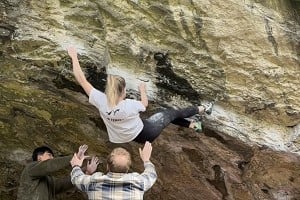
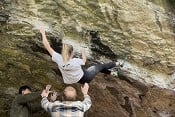

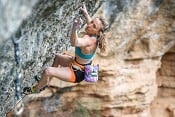
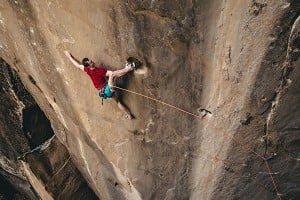
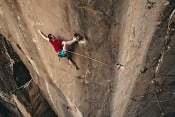



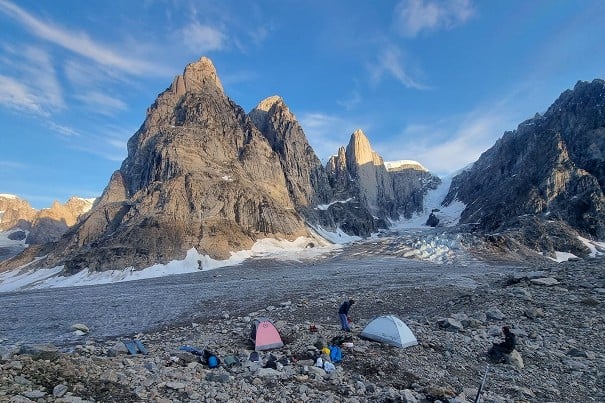
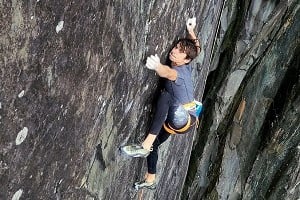
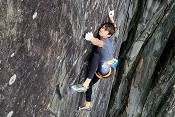


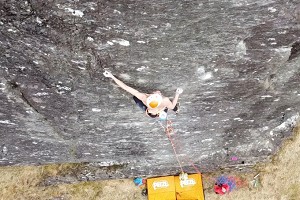
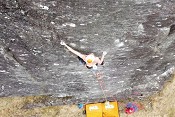
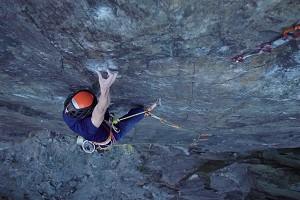
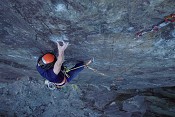
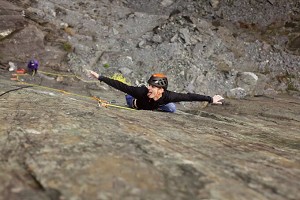
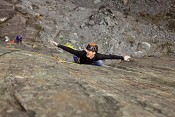


Comments
I've got some shoes you can have if you want Franco.
Firstly, please can we have some topos that show the various lines - both at Nesscliffe and for the Meltdown extension.
Secondly, (go on then, I'll start it off)...
Surely The Sandman isn't a separate route, but merely a small variation on GreatNess Wall - in complete contrast to the furore over The Prow.
[Settles back in comfy chair with popcorn 😁]
https://youtu.be/Vlr79m1pR3g?t=6
When 6b/c is a rest...
Actually they sound like similar cases - a bit of climbing which differs from the parent route. But it's not unusual for a direct finish to get given a different name even if it's not really required.